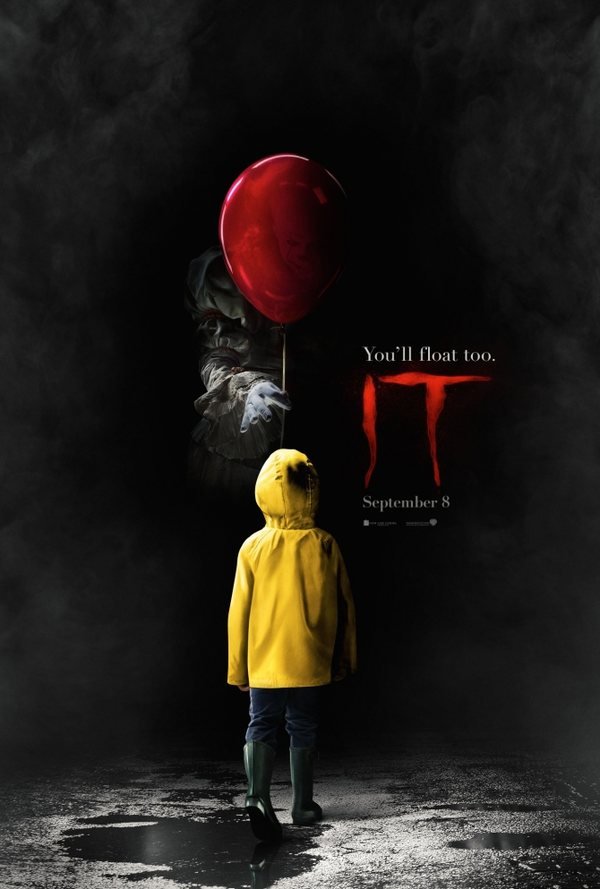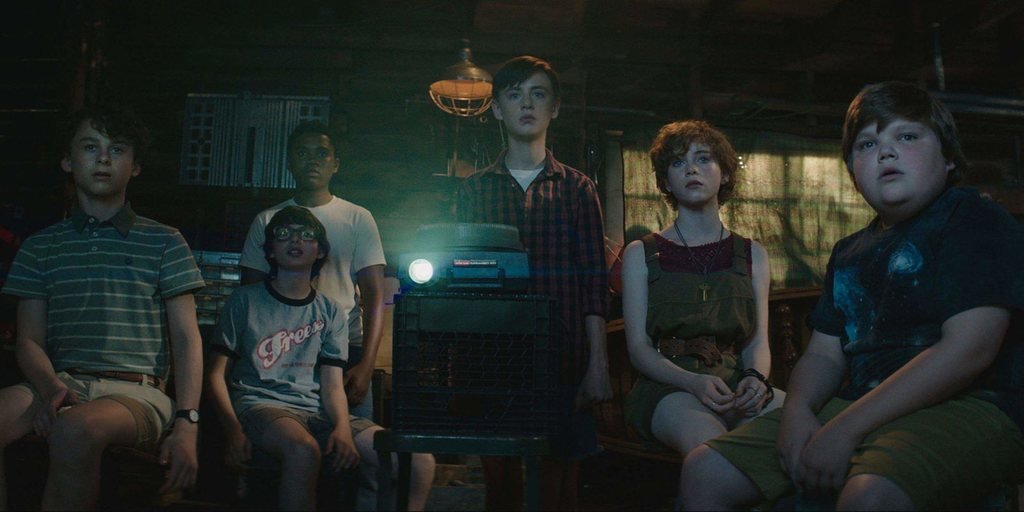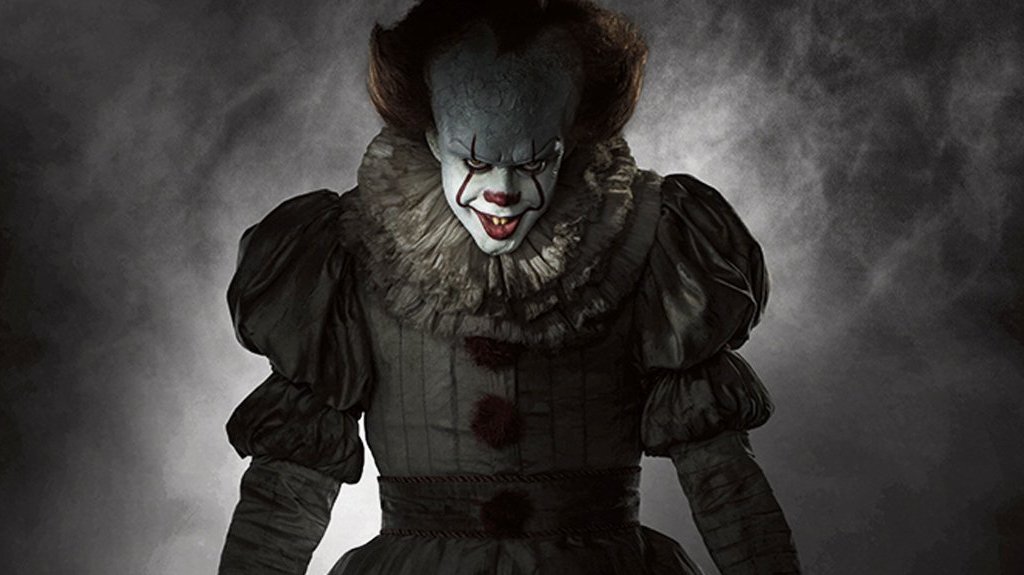IT (2017): Boiling Down King-Size Sprawl To Questionable Effect
Stephen King must be one of the most adaptable authors to emerge in American literature: he favors the kind of high-concept genre premises that lend themselves to screen adaptation and his gifts for characterization and colorful dialogue just add to this appeal. That said, the Stephen King adaptation genre is a notorious uneven collection of work. This is mainly due to the fact that King's novels have elements that work against the idea of adaptation.The new feature version of It shows the minefield of challenges presented by a Stephen King adaptation. The things that make it so appealing to fans make it difficult to translate to the screen: it's got a huge cast of characters, a structure that bounces back and forth between two periods thirty years apart and some scenes (particularly a controversial scene near the end) that defy visual depiction in a releasable mainstream film. The filmmakers behind the 2017 version of It chose a clever approach to the material: simply put, they split the twin childhood/adulthood DNA narrative strand in two, saving the adult timeline for a future film to focus on the kids. The time period has been shifted from the '50s to the '80s but the focus remains on "the Loser's Club," a group of put-upon misfit kids that include stutterer Bill (Jaeden Lieberher), rebellious/mysterious Beverly (Sophia Lillis) sarcastic nerd Richie (Finn Wolfhard) and heavyset new kid Ben (Jeremy Ray Taylor).Bill is the nominal leader of the gang and is haunted by the disappearance of his younger brother, one of many vanished children in the town's recent history. He enlists the others in helping him hunt for his brother and the group comes to realize their little hamlet not only has a sinister history but is preyed upon by an ancient evil that manifests itself in the form of a sinister clown, Pennywise (Bill Skarsgard). As they dodge bullies on one side and cruel adults on the other, they realize they must deal with this evil on their own.
The filmmakers behind the 2017 version of It chose a clever approach to the material: simply put, they split the twin childhood/adulthood DNA narrative strand in two, saving the adult timeline for a future film to focus on the kids. The time period has been shifted from the '50s to the '80s but the focus remains on "the Loser's Club," a group of put-upon misfit kids that include stutterer Bill (Jaeden Lieberher), rebellious/mysterious Beverly (Sophia Lillis) sarcastic nerd Richie (Finn Wolfhard) and heavyset new kid Ben (Jeremy Ray Taylor).Bill is the nominal leader of the gang and is haunted by the disappearance of his younger brother, one of many vanished children in the town's recent history. He enlists the others in helping him hunt for his brother and the group comes to realize their little hamlet not only has a sinister history but is preyed upon by an ancient evil that manifests itself in the form of a sinister clown, Pennywise (Bill Skarsgard). As they dodge bullies on one side and cruel adults on the other, they realize they must deal with this evil on their own. It is a handsomely mounted production, with spot-on production design and atmospheric photography from Chan-Wook Park's cinematographer Chung-hoon Chung. The script retains King's sympathetic depiction of misfits trying to find comfort in each other as they deal with evils both supernatural and realistic. The film also boasts a strong cast of young actors: Lillis is drawing a lot of attention with her poised, sensitive work as the group's lone girl but Taylor does equally naturalistic and likeable work as Ben and Lieberher captures his timid but determined hero character nicely. Also worthy of note are Wolfhard as the film's oft-deployed comic relief and Jack Dylan Grazer as Eddie, the group's hypochondriac and straight man to Richie's wisecracker.However, It also struggles to capture the complexities of its source novel. The kid's character arcs are radically pared down for the purposes of a film, with a few shoved to the background entirely. Even worse, the filmmakers never really figured out how to use Pennywise and he just comes off like a second-division Freddy Krueger despite committed work by Skarsgard. The film's finale is also weirdly rushed and anti-climactic after a big buildup. Even with half the narrative removed, the film still feels the overly simplified Cliff's Notes version of the kids' story.
It is a handsomely mounted production, with spot-on production design and atmospheric photography from Chan-Wook Park's cinematographer Chung-hoon Chung. The script retains King's sympathetic depiction of misfits trying to find comfort in each other as they deal with evils both supernatural and realistic. The film also boasts a strong cast of young actors: Lillis is drawing a lot of attention with her poised, sensitive work as the group's lone girl but Taylor does equally naturalistic and likeable work as Ben and Lieberher captures his timid but determined hero character nicely. Also worthy of note are Wolfhard as the film's oft-deployed comic relief and Jack Dylan Grazer as Eddie, the group's hypochondriac and straight man to Richie's wisecracker.However, It also struggles to capture the complexities of its source novel. The kid's character arcs are radically pared down for the purposes of a film, with a few shoved to the background entirely. Even worse, the filmmakers never really figured out how to use Pennywise and he just comes off like a second-division Freddy Krueger despite committed work by Skarsgard. The film's finale is also weirdly rushed and anti-climactic after a big buildup. Even with half the narrative removed, the film still feels the overly simplified Cliff's Notes version of the kids' story. Another problem lies in the direction of Andy Muschietti. His work shows he's obviously into the horror genre but he forces the scares too hard. Suspense is rarely allowed to build and the film instead favors loud, frantically-cut scenes of CGI gimmickry. The results are consistently intense but more numbing than scary. This is a shame because Muschietti handles the scenes with the kids nicely, getting strong performances and using them to draw out the audience's sympathy. That said, it's telling when a scene of Beverly dodging her pervy father is more unnerving and suspenseful than any of Pennywise's antics.Simply put, a viewing of this version of It reveals just how much Stephen King's novels need their narrative sprawl and deep-dish investment in characterization to achieve their power (as many have noted, Stranger Things often feels more like It's source novel than this film because its t.v.-sized running time allows it to achieve that sprawl and characterization depth). Hopefully, the second installment of It will downplay the forced, frantic approach of this film and let the material breathe a little more.
Another problem lies in the direction of Andy Muschietti. His work shows he's obviously into the horror genre but he forces the scares too hard. Suspense is rarely allowed to build and the film instead favors loud, frantically-cut scenes of CGI gimmickry. The results are consistently intense but more numbing than scary. This is a shame because Muschietti handles the scenes with the kids nicely, getting strong performances and using them to draw out the audience's sympathy. That said, it's telling when a scene of Beverly dodging her pervy father is more unnerving and suspenseful than any of Pennywise's antics.Simply put, a viewing of this version of It reveals just how much Stephen King's novels need their narrative sprawl and deep-dish investment in characterization to achieve their power (as many have noted, Stranger Things often feels more like It's source novel than this film because its t.v.-sized running time allows it to achieve that sprawl and characterization depth). Hopefully, the second installment of It will downplay the forced, frantic approach of this film and let the material breathe a little more.


